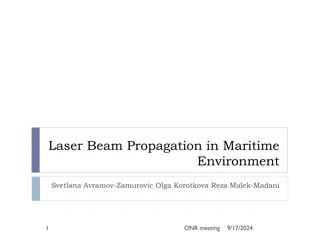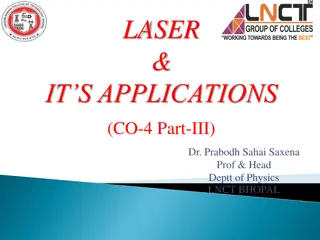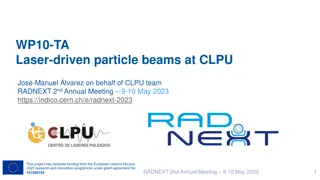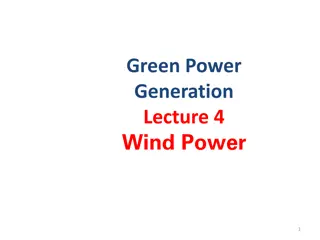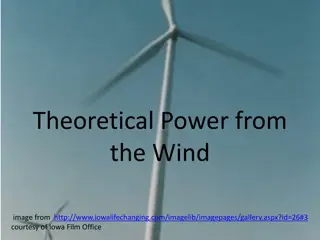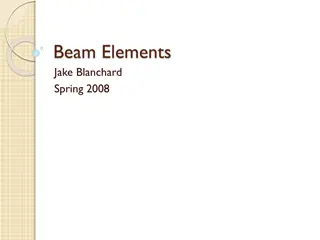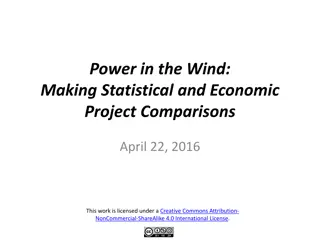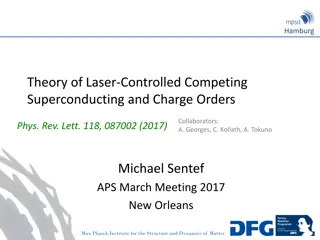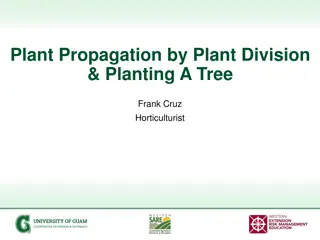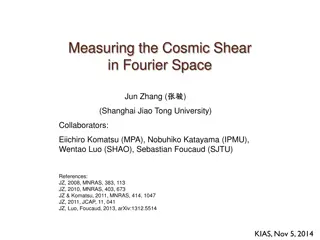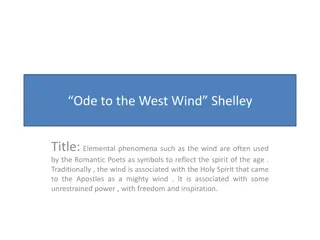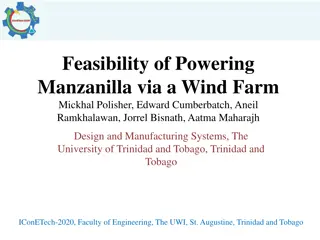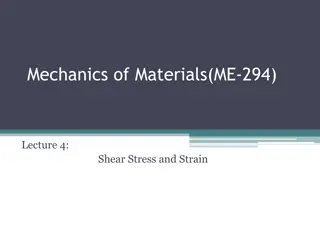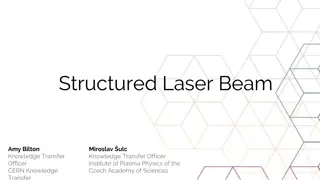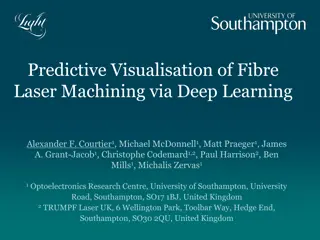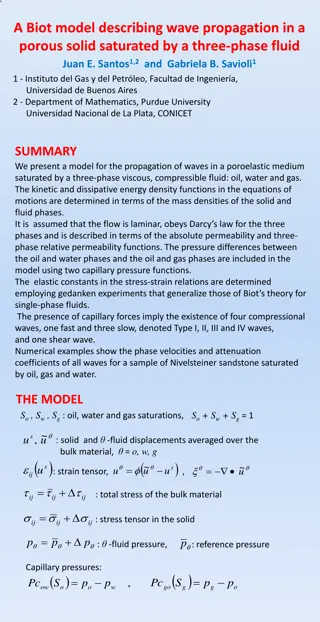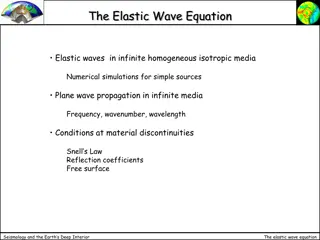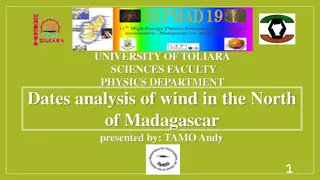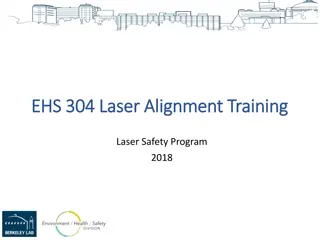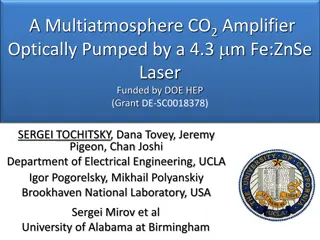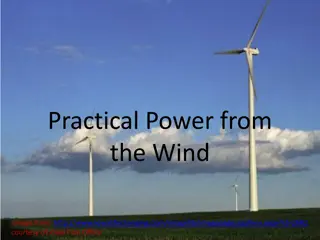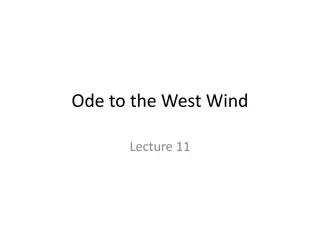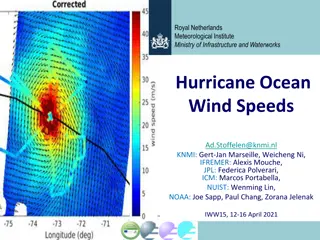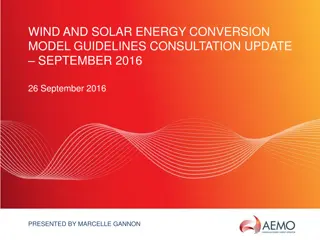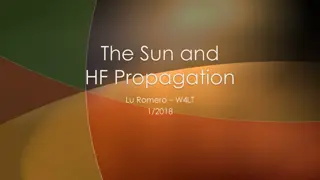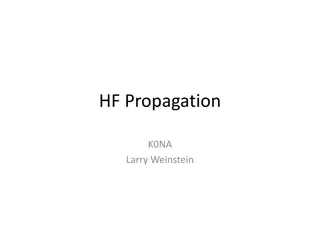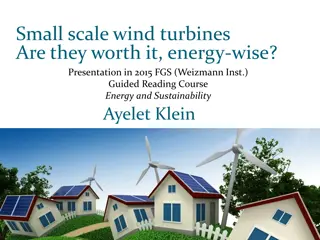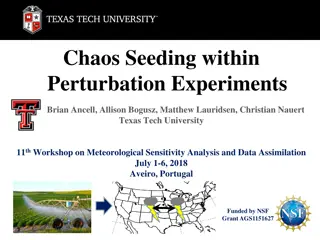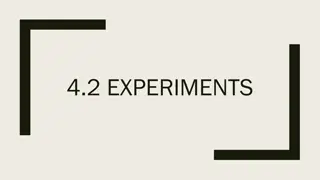Experimental Study on Wind Shear Effects on Laser Propagation
Research conducted by Joe Watkins, Reza Malek-Madani, and Svetlana Avramov-Zamurovic to analyze the impact of wind shear on laser propagation. The experiments involved a HeNe red laser passing through a tunnel with varying wind speeds. Data on light intensities and wind influence were collected and analyzed, showing minimal intensity variation with wind shear. Histograms and comparisons of wind conditions provide insight into the laser's behavior under different environmental factors.
Uploaded on Sep 17, 2024 | 0 Views
Download Presentation

Please find below an Image/Link to download the presentation.
The content on the website is provided AS IS for your information and personal use only. It may not be sold, licensed, or shared on other websites without obtaining consent from the author. Download presentation by click this link. If you encounter any issues during the download, it is possible that the publisher has removed the file from their server.
E N D
Presentation Transcript
Influence of wind shear on laser propagation Joe Watkins Reza Malek-Madani Svetlana Avramov-Zamurovic
Experimental set up to measure the influence of wind shear on laser light propagation Wind shear refers to the variation of wind speed over horizontal distances. Laser source: HeNe red laser 2 mW Laser propagated through a tunnel Target was observed using beam splitter and camera with 12 bit resolution (possibility to measure 4095 different light intensities) A phase screen was inserted in the tunnel in order to introduce wind shear perpendicular to the propagation of the laser beam Three experiments were carried out: NO wind Wind 3m/s Each experiment was monitored for three minutes using camera that recorded changes in the laser light intensities at the target, at the rate of 20 frames per second Wind 5m/s
Comparison between the 5 m/s wind and no wind conditions Wind 5 m/s Wind 5 m/s No wind No wind 20 1600 20 All of the frames added together Only one location indentified for hot pixel 40 40 1500 60 60 1400 80 80 100 100 1300 120 120 140 1200 140 160 160 1100 180 180 200 1000 20 40 60 80 100 120 140 160 180 200 200 50 100 150 200 200 200 180 180 Locations for the maximum intensity for each of 3700 frames 160 160 140 140 120 120 100 100 80 80 60 60 40 40 20 20 20 40 60 80 100 120 140 160 180 200 20 40 60 80 100 120 140 160 180 200
Comparison between the 5 m/s wind and no wind conditions No Wind No Wind Intensity values for all of the frames Intensity values for all of the frames Very little variation : mean 1647.9 Very little variation : mean 1647.9 std = 9.7914 std = 9.7914 averaging radius 10 pixels averaging radius 10 pixels 1690 Wind 5 m/s Wind 5 m/s Intensity values for all of the frames Intensity values for all of the frames Very little variation : mean 1651.8 Very little variation : mean 1651.8 std = 9.1614 std = 9.1614 averaging radius 10 pixels averaging radius 10 pixels 1680 1700 1670 1690 1660 1680 1650 1670 1640 1660 1630 1650 1620 1640 0 500 1000 1500 2000 2500 3000 3500 4000 1630 1620 0 500 1000 1500 2000 2500 3000 3500 4000
Data Histogram Comparison for Wind Influence Experiments From each experiment 5 runs were averaged and histograms are presented 300 Mean light intensity for each run for all of the experiments No wind Wind 3 m/s Wind 5 m/s 250 200 NO wind Experiment Data Frequency 1525 150 1520 3 m/s wind Experiment 100 1515 5 m/s wind Experiment 50 1510 0 1505 1200 1300 1400 1500 1600 1700 1800 Light Intensity 1500 1495 1490 1485 0 5 10 15 20
Data Histogram Comparison for Heat Influence Experiments * No heat * HEAT Phase Screen # of occurrences
Discussion The wind perpendicular to the beam propagation does not have major influence on light intensity fluctuations, compared to the influence the heat phase screen. We were able to establish slight shift in mean value and the shape of the histogram for the three experiments with variable wind velocities Individual Probability Density Functions for each run did not demonstrate reliable differentiation between the experiments.


